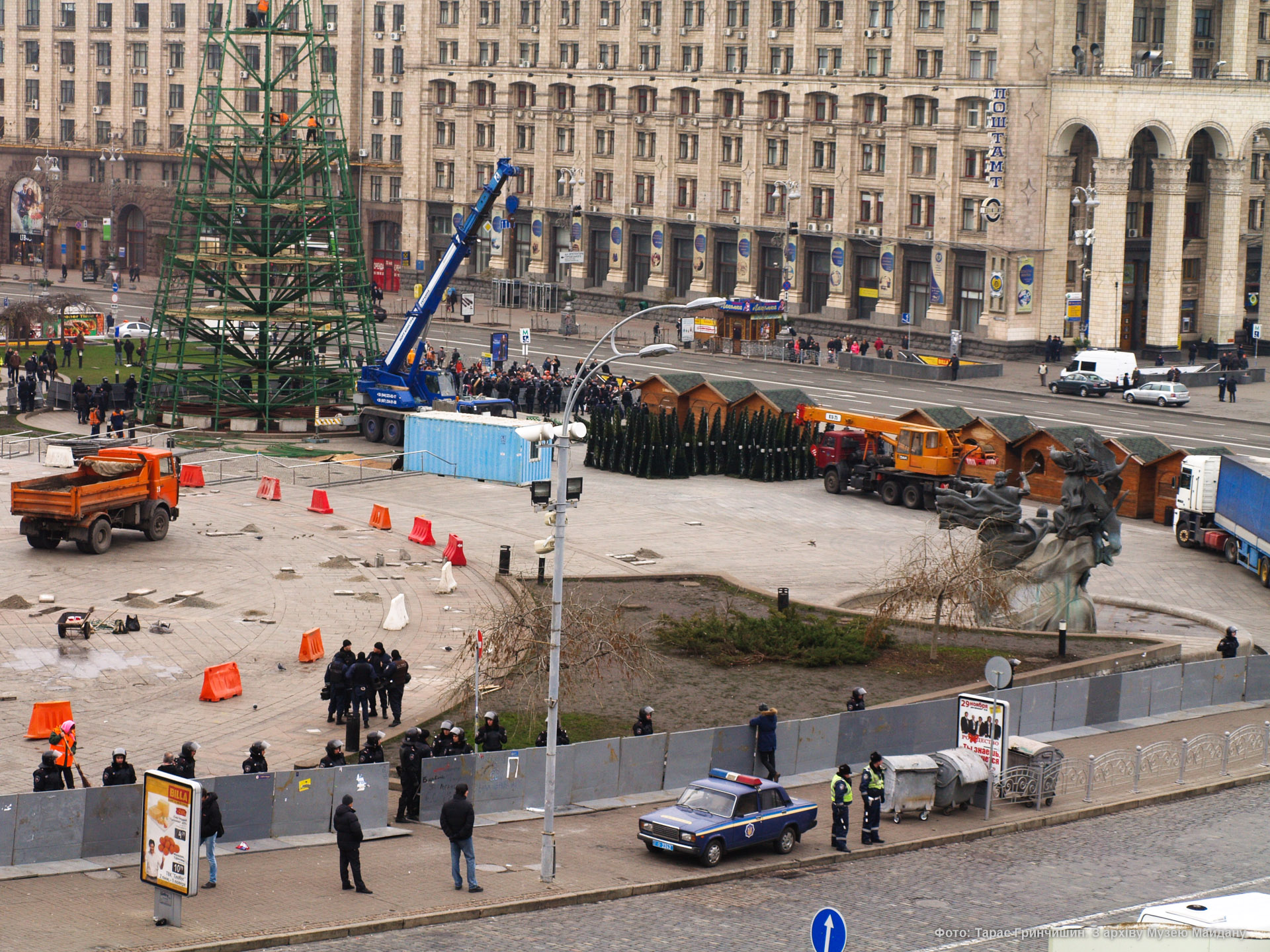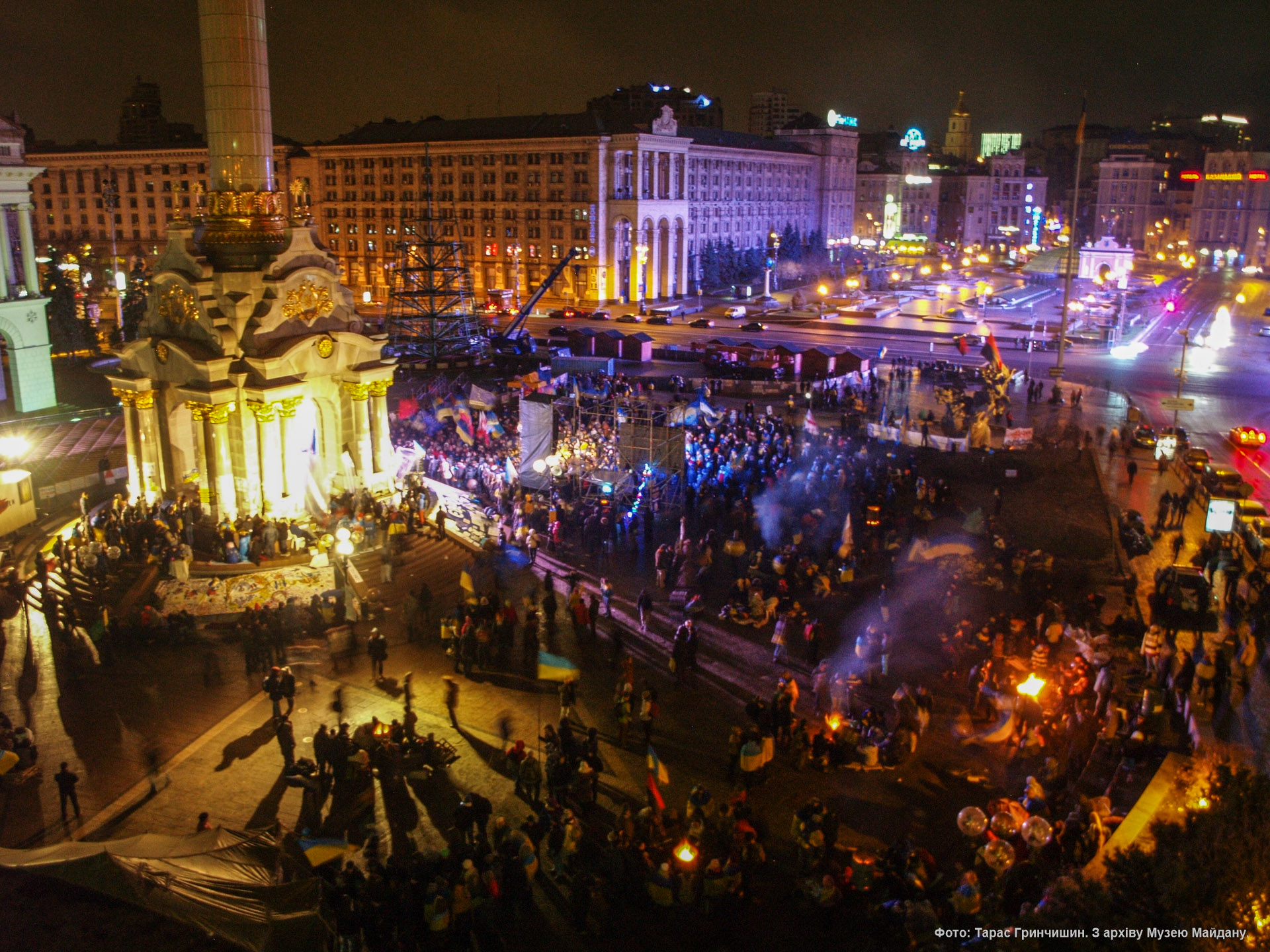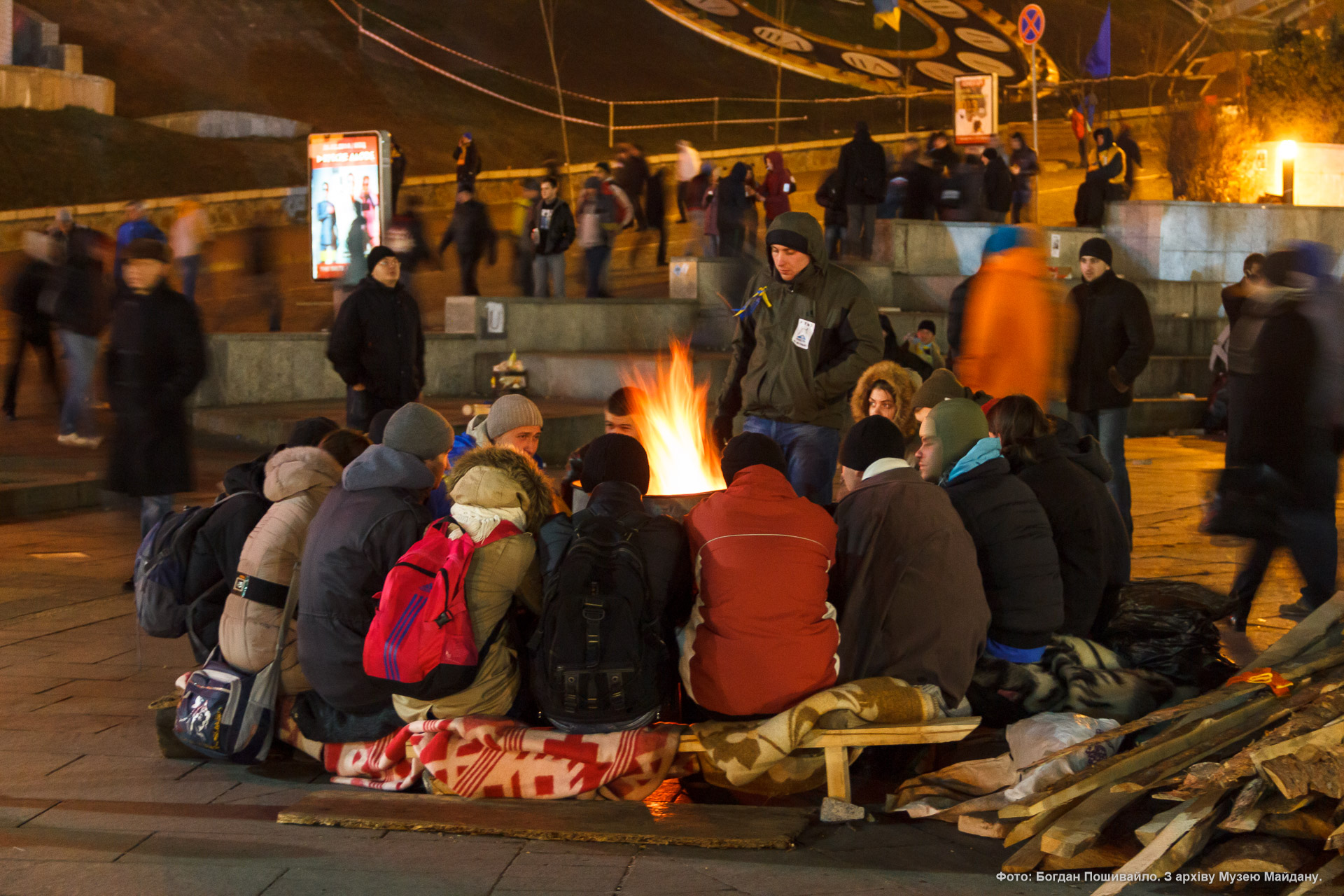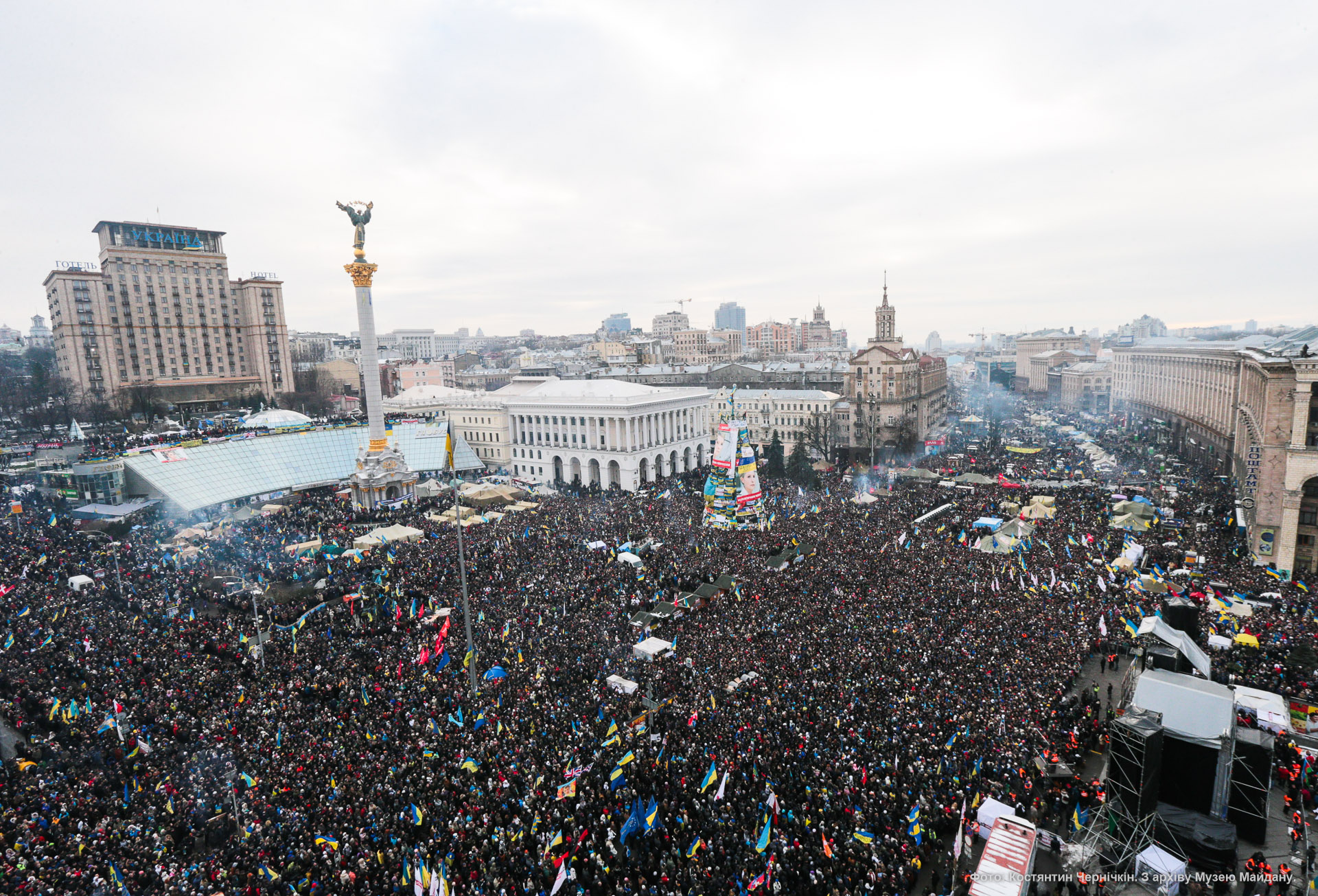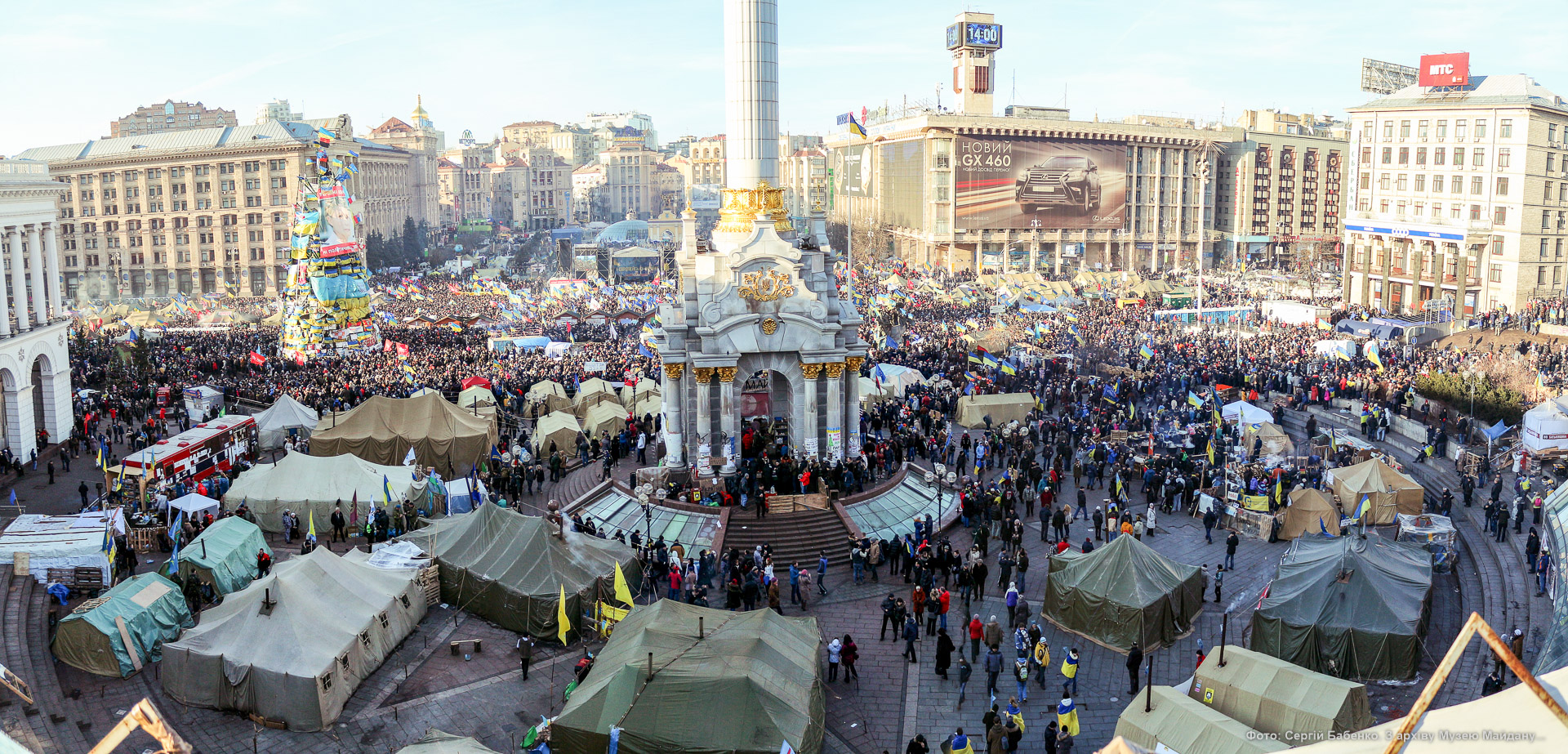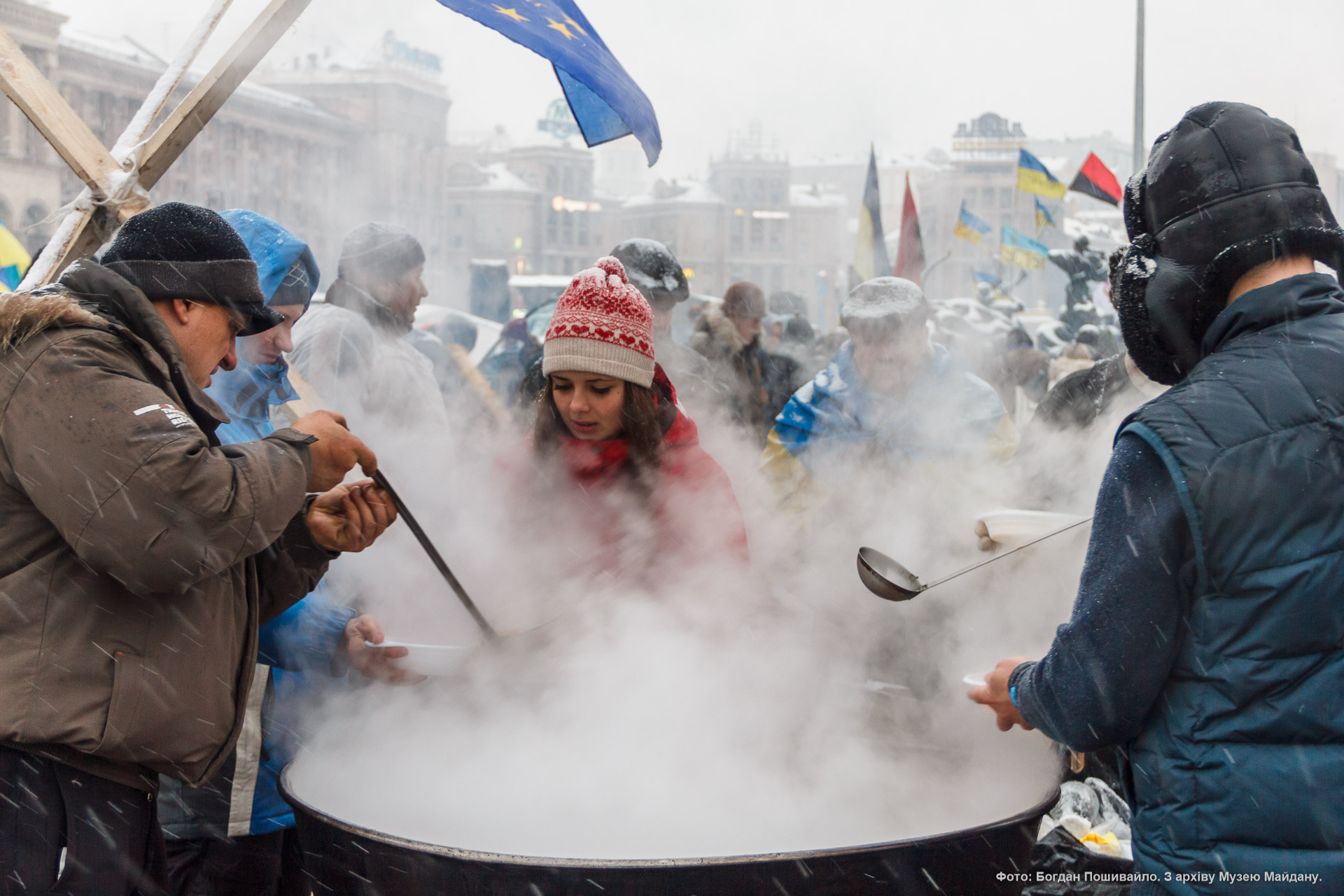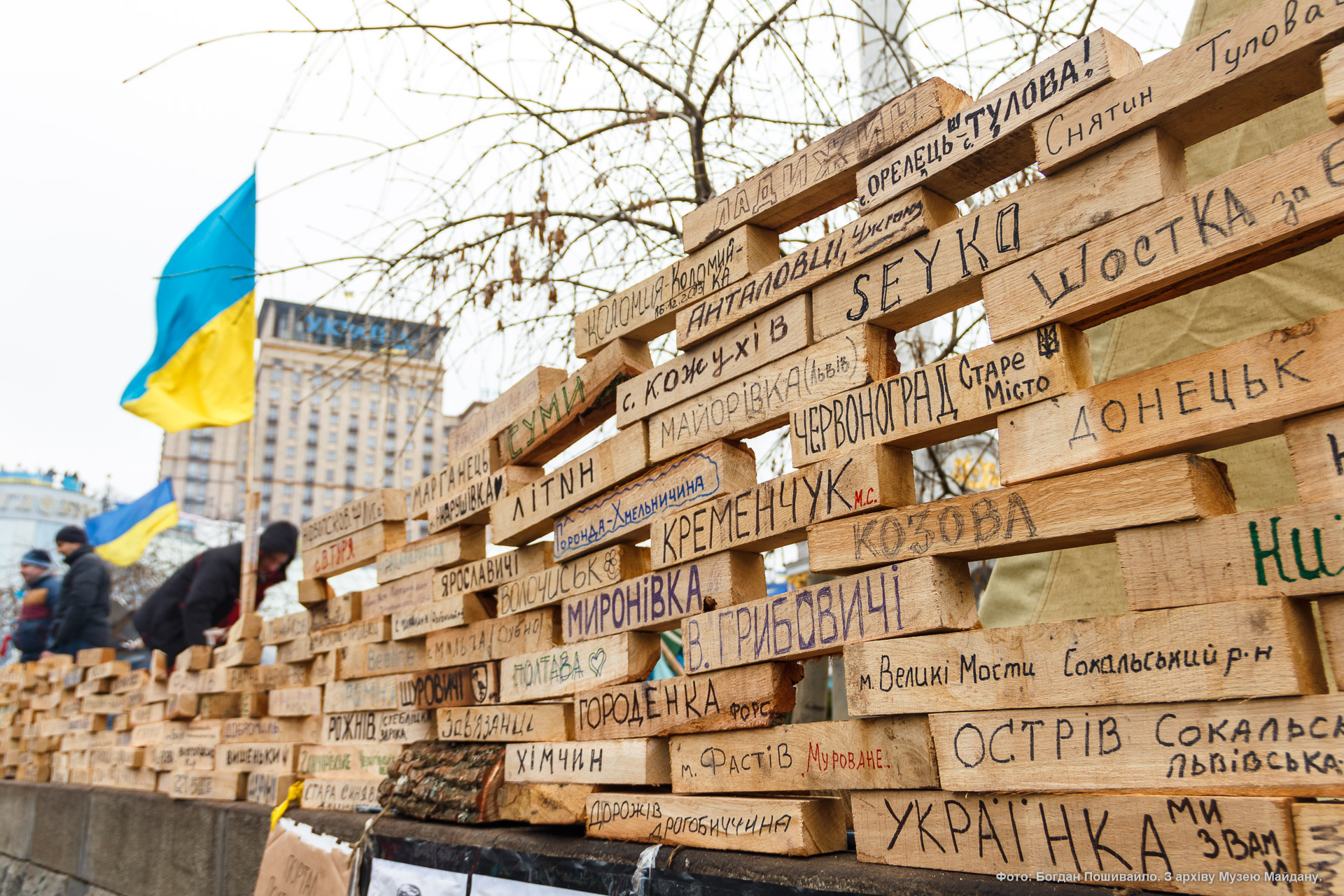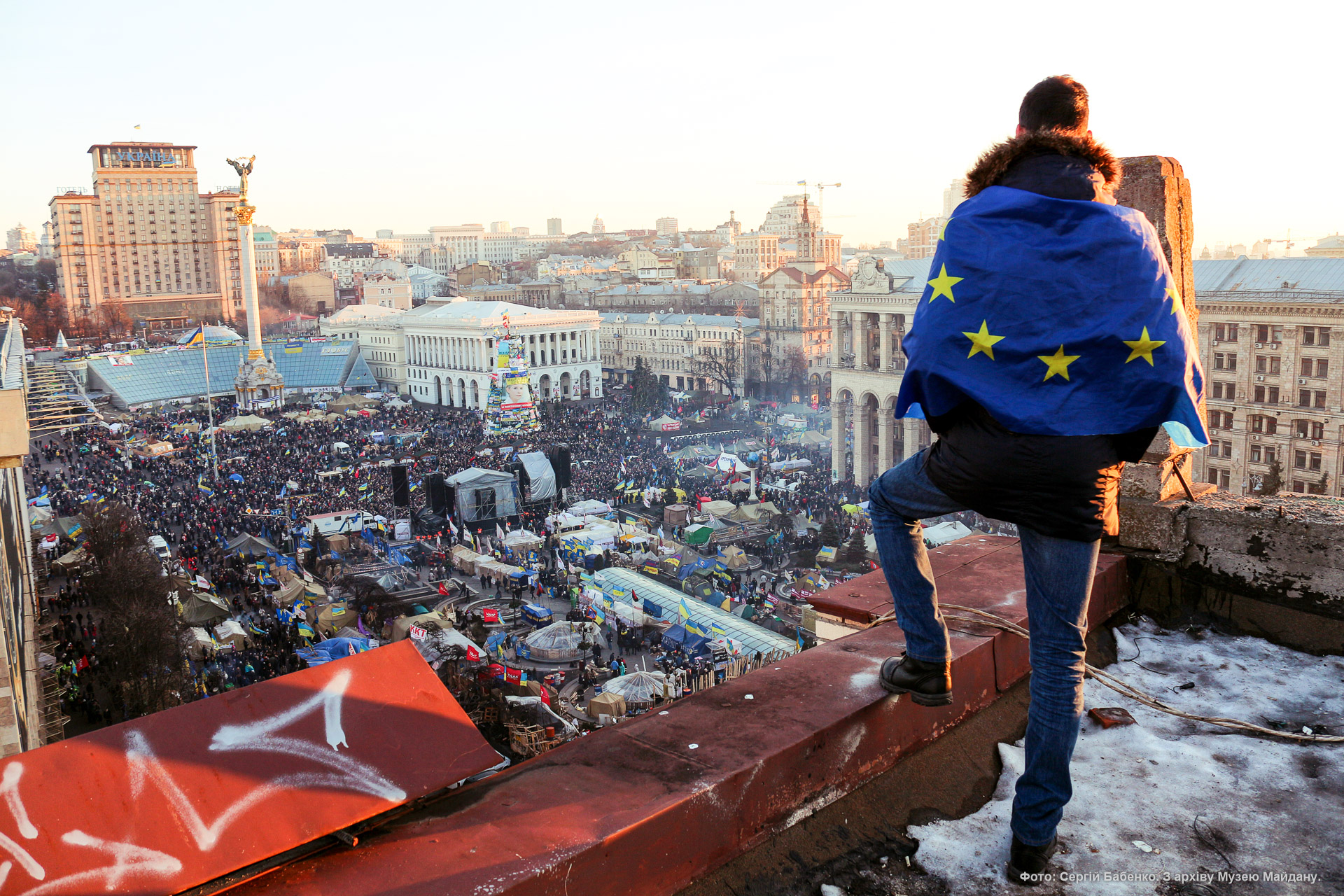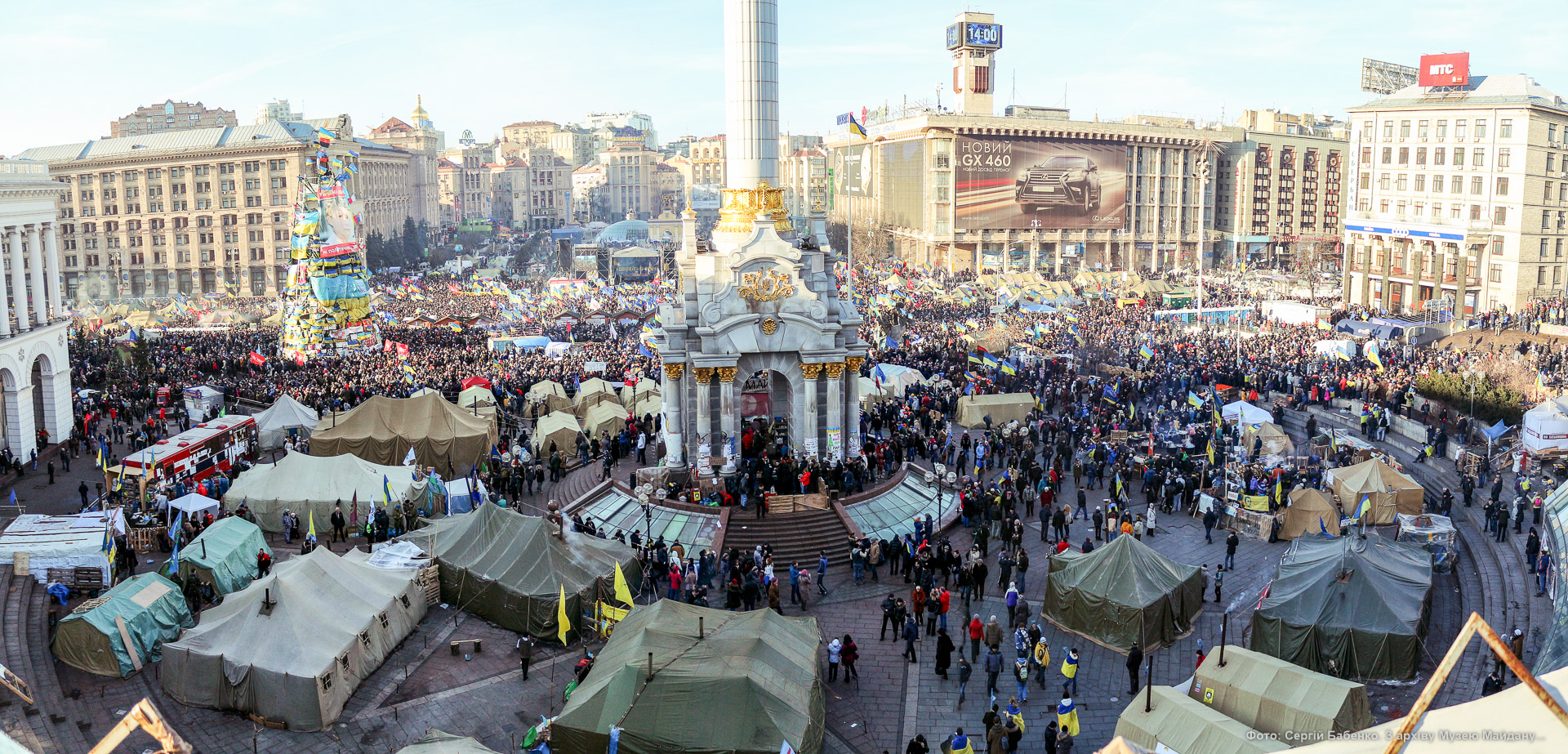

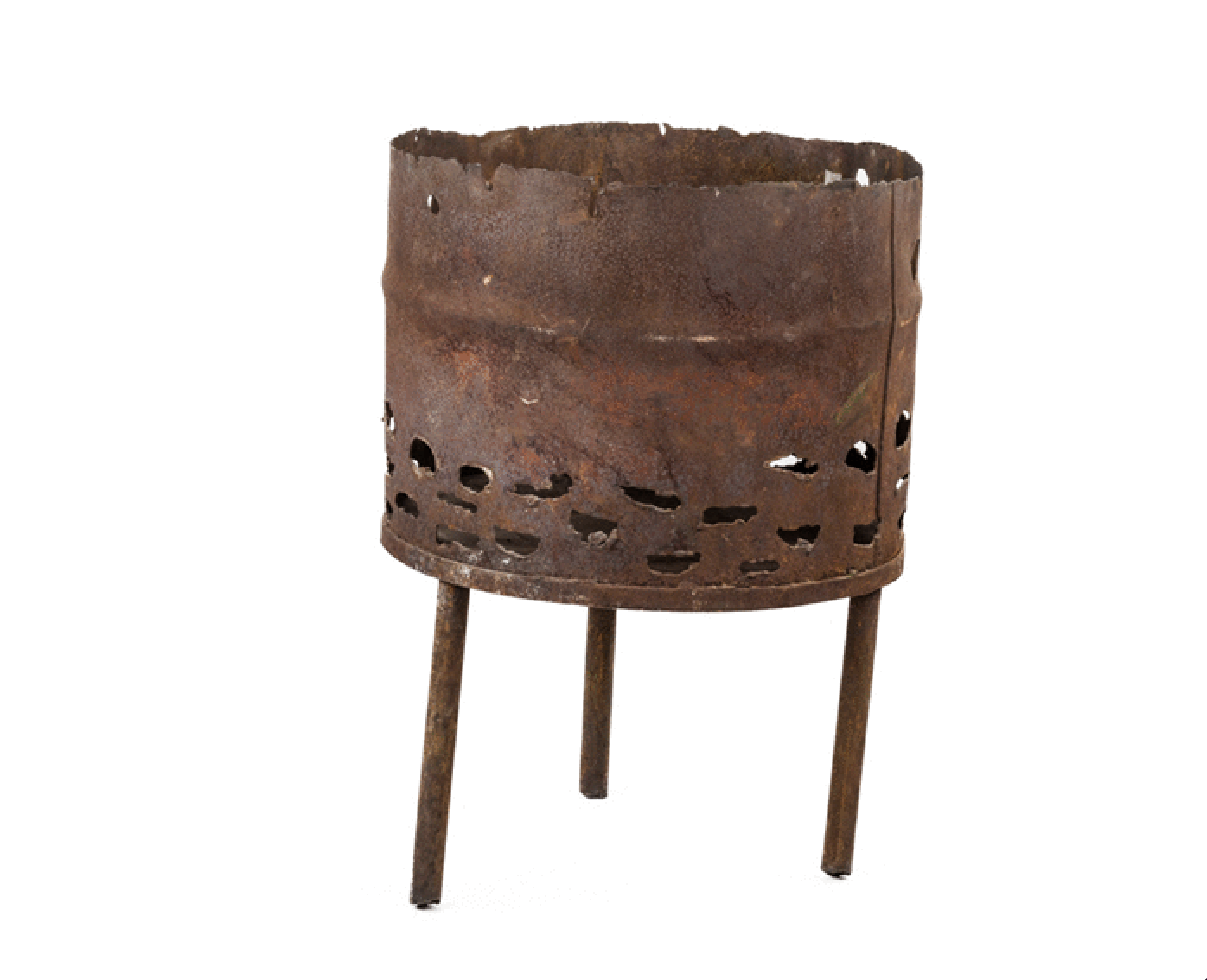
The Tent CityThe observation platform of the Globus shopping mall
The authorities were afraid of an indefinite protest. Each time the protesters tried to set up tents, riot police attacks and demolitions would come almost instantly. The activists decided to protest in the open air.
During the first stage of the protests, the camp of protesters – mostly students and youths – was set near metal barrels with fire and an improvised “stage”, the elevated platform of the Independence Monument.
Tens of thousands of people came to the daytime and evening rallies on Maidan. However, during the night, when only a few hundred people stayed, the protest was very vulnerable. On the night of November 29-30, 2013, no more than 200 people, mostly students, stayed overnight near the Independence Monument. Around 4 a.m., the Berkut special riot police unit brutally attacked and dispersed the protesters. Security forces fenced off the empty square around the monument from passersby and stationed personnel around the perimeter. It was a turning point in the protests.
The massive rally on December 1, which brought together about a million people demanding punishment for those responsible for beating and dispersing the peaceful protesters, forced the security forces to flee Independence Square. A protest Tent City was set up the same day.
The self-organized protest Tent City became a kind of city within a city. With its system of governance, active cultural life, and mutual support among all, it was a model of the ideal society and solidarity for which the Maidan activists fought. The Maidan was like an anthill, where everyone found an important work for themselves, and became not just a participant but a co-creator: someone cooked food, someone kept order or joined the Maidan Medical Service, someone brought firewood, others planned and implemented educational projects and leisure activities… Entrepreneurs provided resources, and millions of Ukrainians in all regions financially supported the Maidan’s activities.
One of the mandatory rules of the Tent City was a ban on alcohol. The Self-Defense units watched people coming to the Maidan and didn’t allow anybody intoxicated to enter the protest space. Those behaving provocatively or inappropriately were also not welcome. During the peaceful protest, musicians would perform on the Maidan stage, keeping people warm during the frosty nights. The space also became a place for lectures, discussions, historical films viewing, and an “open microphone” platform that allowed everyone to express their opinions. The integrity, mutual support, and self-organization of the Maidan Tent City evoked associations with the ancient traditions of the Zaporozhian Sich for many participants and outside observers. In December 2013, there were around a hundred tents on the Independence Square (Maidan) with nearly 700 barrels with bonfire to keep the protesters warm.
How was it...
A memory from a participant of the events:
…We immediately began to self-organize ourselves, created a medical service, and a legal service, and disseminated leaflets on what to do when detained, what actions to take, whom to contact, what we have the right to do, what the police have no right to do… We organized a kitchen. This self-organization that night was reminiscent of the Orange Revolution [2004].
Sign up for a tour
Сontacts
National Memorial Complex of the Heavenly Hundred Heroes - Museum of the Revolution of Dignity 9 Lavrska Street, building 20, Kyiv, 01015
+38 044 229 40 13 maidanmuseum@gmail.comOur socials:
«Terra Dignitas AR»
It is the first attempt to "revive" the Kyiv Maidan of 2013-2014 and recreate the image and spirit of the historical events of the Revolution of Dignity by means of augmented reality.
Your opinion is important to us. We need to hear from you both a kind word and constructive comments. This contributes to the improvement of our work.

